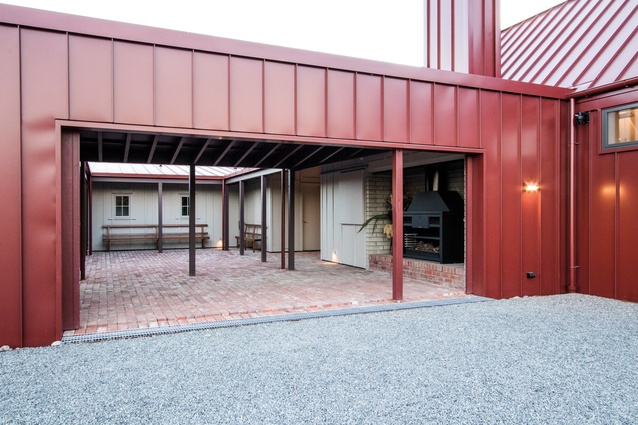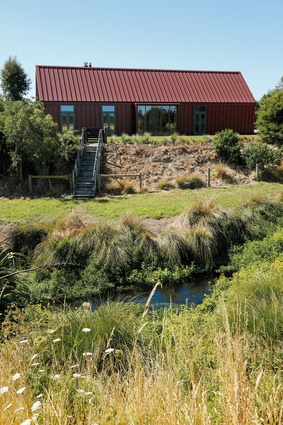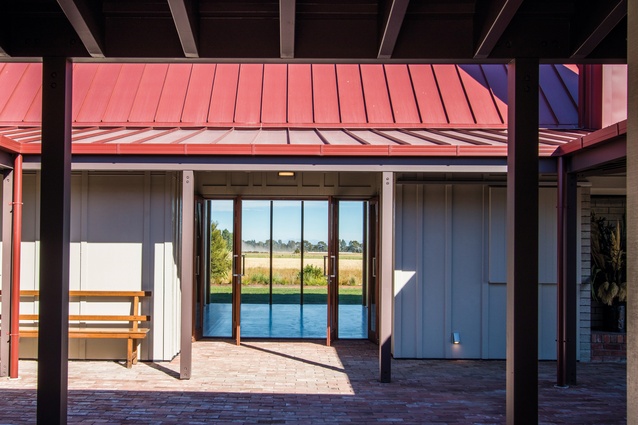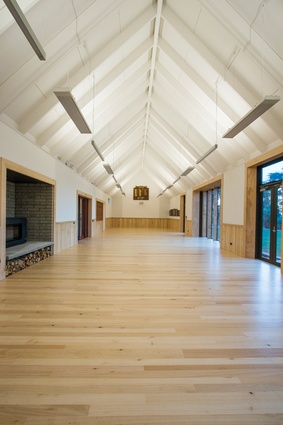Final barracks: Lakeside Soldiers Memorial Hall
Ian Lochhead reflects on what the reinstatement of the Lakeside Soldiers Memorial Hall by Architecture Workshop means to the local community and its sense of connectedness to place.
Community halls have been significant architectural features of New Zealand’s rural landscapes for more than a century but, with increasing urbanisation in the second half of the 20th century, many have fallen into disuse. They are the forlorn relics of once-vibrant communities and, often, the only physical markers of their existence.
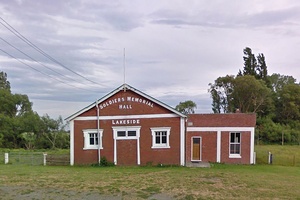
In post-earthquake Canterbury, however, this trend has been reversed, as new community halls have been built to replace damaged facilities while others have been repaired and upgraded. Among these, the Lakeside Soldiers Memorial Hall occupies a unique place.
Lakeside, as the name suggests, is situated on the south-eastern margins of Te Waihora (Lake Ellesmere), approximately 45 kilometres from Christchurch. Initial plans to build a community hall in 1913 were halted by the outbreak of World War One the following year but were renewed in 1916 with the proposal to construct a hall as a memorial to the district’s fallen as well as to provide a place for returning soldiers to meet and socialise.
The hall opened on 3 August 1917; the Third Battle of Ypres had just commenced on the Western Front but the Battle of Passchendaele, during which 957 New Zealanders were killed, was still two months in the future. The Lakeside Hall was one of New Zealand’s earliest World War One memorials and among the first across the wider British Empire.
The original building was typical of many early-20th-century country halls: oriented towards the road and rectangular in plan, with a raised stage at one end and a kitchen beyond. Somewhat unusually, it was built of brick. In the 1950s, a supper room was added to the eastern side of the building. It served as the vital hub of the small Lakeside community until September 2010 when it was closed as a result of earthquake damage.
Deemed uneconomic to repair, it was subsequently demolished. As owner of the hall, Selwyn District Council was initially inclined to reinvest insurance payments in more centralised facilities but community pride and the desire to perpetuate the memorial function of the original hall resulted in the former hall management committee reconstituting itself as a rebuilding committee and successfully lobbying council to reinstate the memorial.
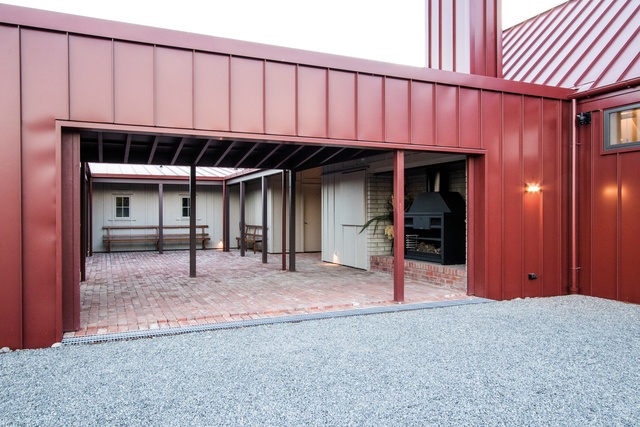
Architecture Workshop was commissioned to design the building. An award-winning Wellington practice might seem an unlikely choice as architects of a modest hall for a rural community in Canterbury; the connection was project architect Hamish McLachlan, whose family has farmed in the district for four generations and whose great-grandfather donated the land for the original hall. Construction began in early 2018 and the building was completed just in time to mark the centennial of the World War One armistice on 11 November 2018.
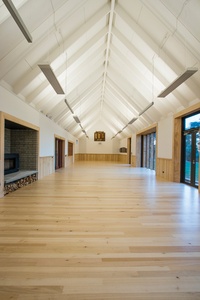
Working within the constraints of a tight budget, Architecture Workshop’s design provides a flexible, modern response to a traditional building type while acknowledging the essential characteristics of its predecessor. Reorienting the hall’s main axis away from the road and aligning it with the adjacent Harts Creek opened the possibility of vistas across farmland to the distant Southern Alps.
The main entrance is formed on a secondary cross-axis through a courtyard around which the service functions of kitchen, bar, storerooms and toilets are situated. The courtyard, open to the sky in the centre, offers an informal space that can also communicate with the surrounding landscape when the large barn door on its north-eastern side is opened. The main hall, in contrast, is more formal, its proportions based on the much-admired Long Room at Lord’s Cricket Ground in London.
Unlike the classical detailing of the Lord’s Long Room, the Lakeside Hall is sparely detailed with a steeply pitched, open ceiling, giving it a Gothic, almost ecclesiastical, feel that is appropriate to its memorial function. The Roll of Honour, retained from the previous hall, occupies pride of place in the southern gable and on the flanking wall are hung portraits of men from the district who served and died in the Great War.
The other key focus of the space is the central oriel window, aligned with the main entrance, which provides expansive views towards the distant mountains. It is a view that invites reflection, suggesting a comparison with the western window of Lake Tekapo’s Church of the Good Shepherd and its famous mountain vista.
Connections to place and the past are evoked throughout the building. The courtyard is paved with bricks recovered from the original hall, supplemented by others from earthquake-damaged chimneys from local farmhouses. The hall itself has a timber floor and dado of eucalyptus nitens, milled from trees grown within sight of the building and donated to the project. The light colour of the floor and dado also contributes to the spacious and airy feel of the space. The deep-set, raised fireplace, placed back-to-back with an outdoor fireplace in the courtyard, provides a secondary focus for the main space while also recalling a key feature of its predecessor.
From the exterior, the building’s formal elements of elongated gabled hall and lower, squarer, service structure are clearly differentiated but unified through the use of standing-seam steel cladding, painted scoria red. The choice of colour not only references the brick construction of the previous building but also evokes the traditional use of red-oxide paint on rural vernacular structures.
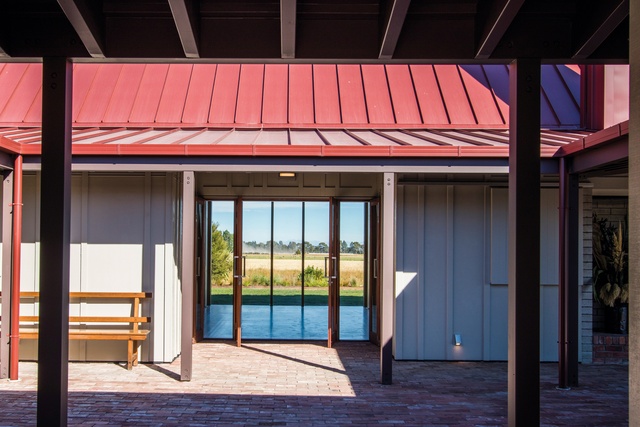
Architecture Workshop’s design has an almost elemental simplicity that belies the sophistication of its plan, the restrained elegance of its detailing and the astute selection of a limited palette of materials and colours. Even though less than a year old, the new Lakeside Soldiers Memorial Hall has already settled into its environment, unlike its predecessor, which always stood four-square against the landscape. For Lakeside’s soldiers, it is a final barracks in which the memory of their sacrifice is perpetuated; for the local community, it is a source of pride that connects past to present.
It will ensure that the sense of connectedness to place, which underpinned the desire to rebuild the 1917 hall, will continue into the future. A 2019 NZIA Local Award for public architecture, along with a Resene Colour Award, attests to professional recognition of the building’s quality; the fact that it has been in ever-increasing use since its opening in February 2019 reflects the high regard in which it is held by locals and those from further afield.
Ian Lochhead’s family has farmed in the Lakeside area since the 1860s. His great aunt, Margaretta Lochhead, whose brother, John McLachlan, gave the land for the original Lakeside Hall, played a key role in supporting its construction. Ian was a member of the Rebuilding Committee for the rebuilding of the hall in 2018.
This article first appeared in Architecture New Zealand magazine.



